Penguins, with their charming waddle and distinctive black-and-white plumage, have captured the hearts of people young and old around the world. These endearing creatures, found primarily in the southern hemisphere, have become beloved symbols of resilience and adaptability in the face of harsh environments. Whether you’re a passionate penguin enthusiast or simply seeking an educationally fun and creative outlet, our penguin coloring pages offer a delightful way to engage with these remarkable birds while unleashing your artistic talents. Get ready to add a splash of color to these adorable avian friends and embark on a colorful journey through the icy landscapes they call home.
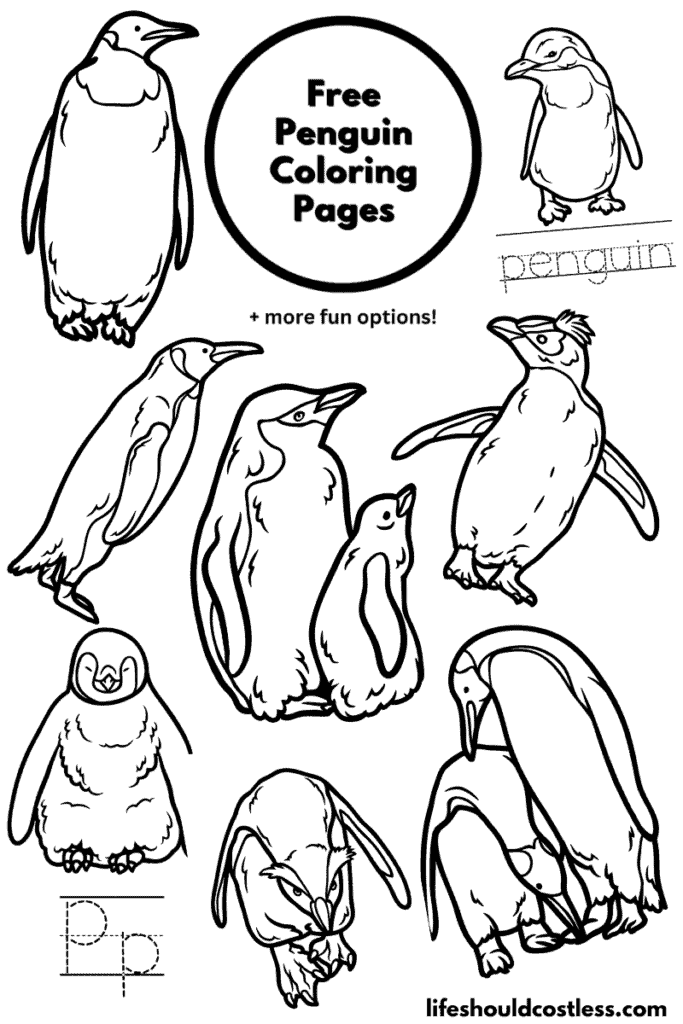
Simply choose the design that most appeals to you, download the free PDF template, print it, and start coloring to your little heart’s content.
Alternatively, you can also utilize these designs as embroidery patterns or draw inspiration from them for delicate fine line tattoos.
Penguin facts
For those who are new to my coloring pages, it’s important to note that I enjoy providing you with the opportunity to learn about the subject, allowing you to seamlessly transform your coloring experience into an educational lesson.
So, let’s waddle and dive right in!
Penguins are fascinating creatures with a wealth of intriguing facts, here are some of my favorite tidbits:
- Habitat Diversity: Penguins are primarily associated with Antarctica, but they can also be found in various regions of the Southern Hemisphere, from the Galápagos Islands near the equator to the icy waters of Antarctica, covering a range of climates and ecosystems.
- Adaptations to Cold: Penguins have evolved remarkable adaptations for surviving in extreme cold. Their thick layer of blubber serves as insulation, while their feathers trap a layer of air close to their bodies, providing further insulation.
- Countershading: Penguins have a unique coloration called countershading. Their white bellies make them difficult to spot from below when swimming, and their dark backs blend in with the ocean surface when seen from above, which helps protect them from predators.
- Aquatic Birds: Penguins are flightless birds, but they are incredibly adapted for life in the water. Their wings have evolved into flippers, allowing them to “fly” underwater with great agility. They are excellent swimmers and can reach speeds of up to 22 miles per hour (or 35.41 kilometers per hour).
- Deep Divers: Some penguin species, like the Emperor penguin, are renowned for their incredible diving abilities. They can dive to depths of up to 1,500 feet (457 meters) and stay submerged for over 20 minutes, foraging for food such as fish and squid.
- Social Creatures: Penguins are highly social animals, often forming large colonies for breeding and protection. These colonies can range from a few dozen to thousands of individuals. Their social structure involves cooperation in incubating eggs and raising chicks.
- Unique Nesting Habits: Many penguin species build nests from rocks to keep their eggs and chicks off the cold ground. Some species even incubate their eggs on their feet, keeping them warm by tucking them under a flap of skin.
- Monogamous Mates: Penguins are known for their strong monogamous bonds. Many species mate for life and return to the same partner year after year during the breeding season.
- Diverse Species: There are 18 recognized penguin species, each with its own unique characteristics and adaptations. These species vary in size, with the Emperor penguin being the largest and the Little Blue penguin the smallest.
- March of the Penguins: Emperor penguins are famous for their long, arduous journeys to breeding colonies. Males incubate the eggs during the harsh winter, huddling together in large groups to conserve warmth and taking turns to brave the frigid Antarctic conditions to find food.
- Communication: Penguins communicate with each other through vocalizations, body movements, and displays. Some species have distinct calls, allowing them to recognize their mates and chicks in large, noisy colonies.
- Conservation: Many penguin species are threatened by climate change, habitat destruction, and overfishing, making them a focus of conservation efforts. Protecting their breeding grounds and regulating fishing in their habitats are crucial steps in ensuring their survival.
These fun and interesting facts highlight the remarkable adaptations and behaviors of penguins, making them one of the most captivating creatures in the animal kingdom.
We learned a lot, however, there is much more to know about penguins.
If you would like to continue in your penguin-knowledge-seeking, here are some other reputable resources to learn about them:
- https://en.wikipedia.org/wiki/Penguin
- https://kids.britannica.com/kids/article/penguin/353611
- https://www.nationalgeographic.com/animals/birds/facts/penguins-1
- https://www.worldwildlife.org/species/penguin
- https://seaworld.com/educational-resources/penguins/
- https://ocean.si.edu/ocean-life/seabirds/penguins
- To see all of my free printables, go here.
- To see an alphabetized index of all of my coloring pages, go here.
- To see all of my Animals coloring pages, go here.
- To see all of my Birds coloring pages, go here.
Coloring tips
Coloring a picture of a penguin can be a truly delightful and creative activity.
Here are some of my best tips and tricks to help you make your penguin artwork really come to life:
- Reference Images: Use reference images of real penguins to understand their natural colors and patterns. This will help you create a more realistic and accurate coloring.
- Start Light: Begin with light colors and build up layers gradually. It’s easier to add more color than to remove it if you color too dark too quickly.
- Blending: Consider using colored pencils, markers, or even watercolor pencils for blending colors smoothly. Blending can add depth and dimension to your penguin.
- Shading: Pay attention to the light source in your picture and add shading accordingly. Darker areas should be shaded more heavily, while lighter areas can remain more vibrant.
- Texture: Experiment with different techniques to create texture on the penguin’s feathers. For example, you can use tiny, short strokes to mimic the look of feathers.
- Contrasting Colors: Use contrasting colors for the penguin’s beak, feet, and any patterns or markings. This will make these features stand out and add visual interest.
- Background: Consider the background of your coloring page. A simple, contrasting background can make the penguin pop. You could even use cool colors to represent the icy environment many penguins live in.
- Experiment with Colors: While real penguins are typically black and white, don’t be afraid to get creative with colors. Try using blues, purples, or even pastels to give your penguin a unique and whimsical twist.
- Stay Neat: Keep your coloring neat and within the lines for a polished look. You can use an eraser to clean up any stray marks.
- Practice: Coloring is a skill that improves with practice. Don’t be discouraged if your first attempt isn’t perfect. The more you color, the better you’ll become.
- Patience: Take your time. Coloring can be a relaxing and meditative activity, so enjoy the process rather than rushing through it.
- Variety: Experiment with different coloring techniques and styles. You can create a realistic depiction of a penguin or opt for a more abstract or stylized approach.
- Protect Your Work: If you’re particularly proud of your coloring page, consider using a fixative spray to seal the colors and prevent smudging.
- Share and Display: Once you’ve finished coloring your penguin, share your creation with friends and family or display it in your home. It’s a great way to showcase your artistic skills.
Remember, coloring is supposed to be a fun and creative activity, so there are no strict rules.
Feel free to let your imagination run wild and enjoy the process of bringing your penguin images to life.
Options For Printing:
Letter P is for penguin writing practice worksheets
*My letter P is for penguin printable coloring sheets have been exclusively crafted for classroom usage, making them the sole printables on this page that do not necessitate written authorization for public utilization.
If someone inquires about their source, please share the link to this article with them. Your support is greatly appreciated!
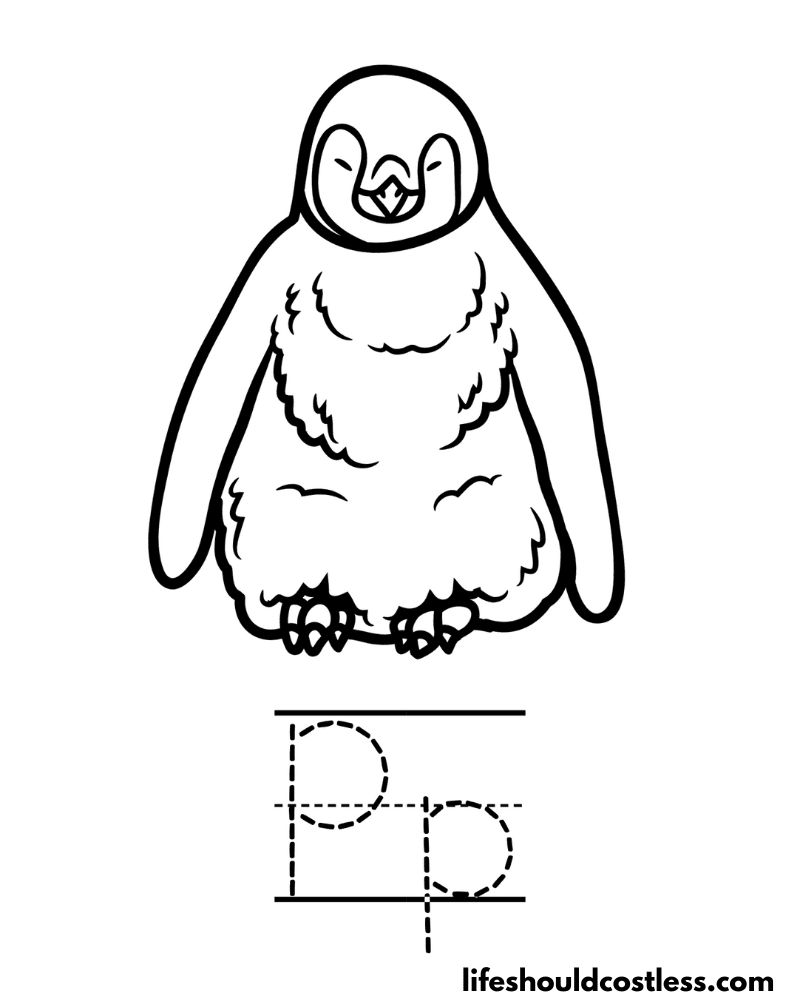
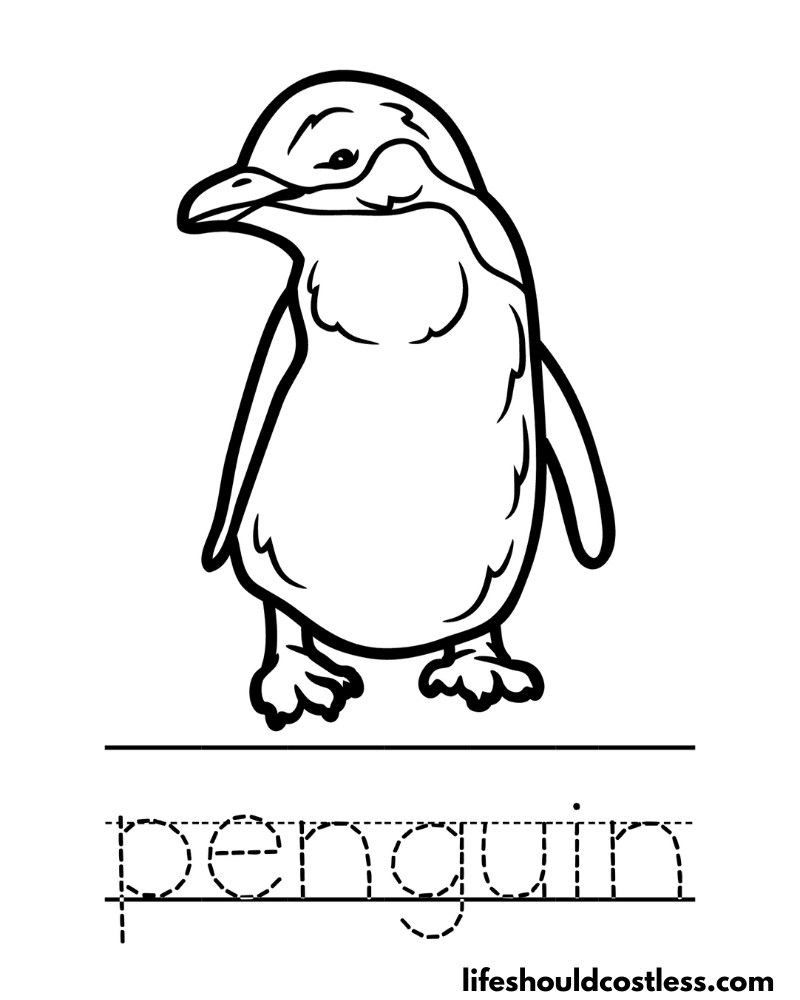
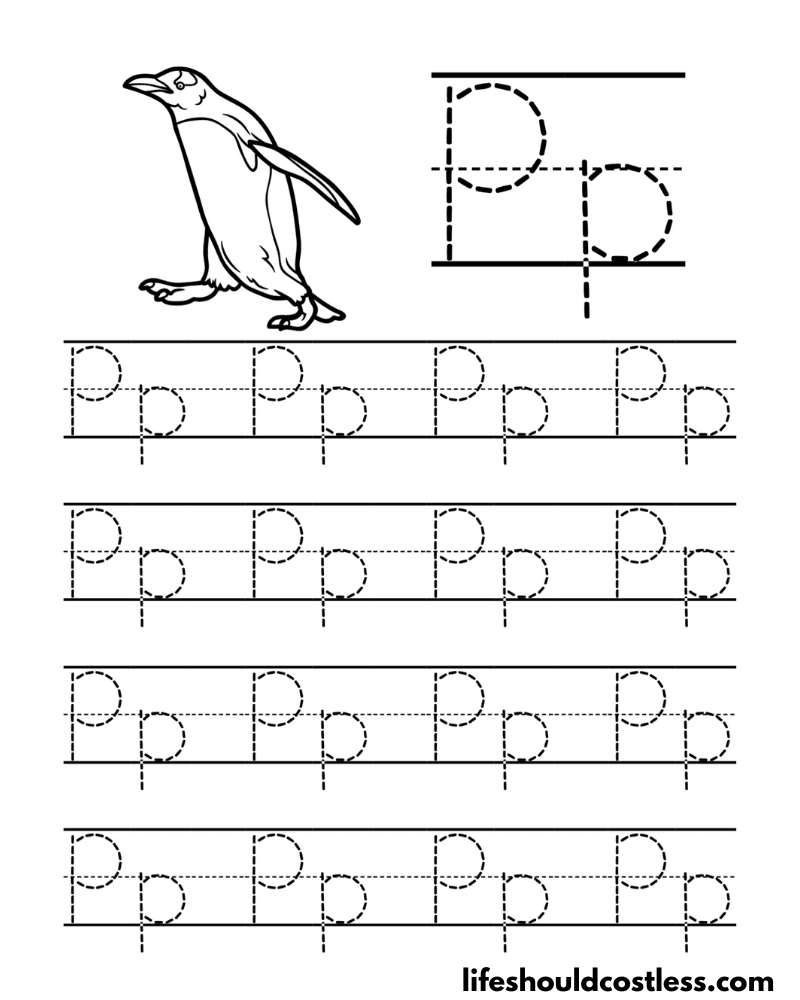
Various penguin designs
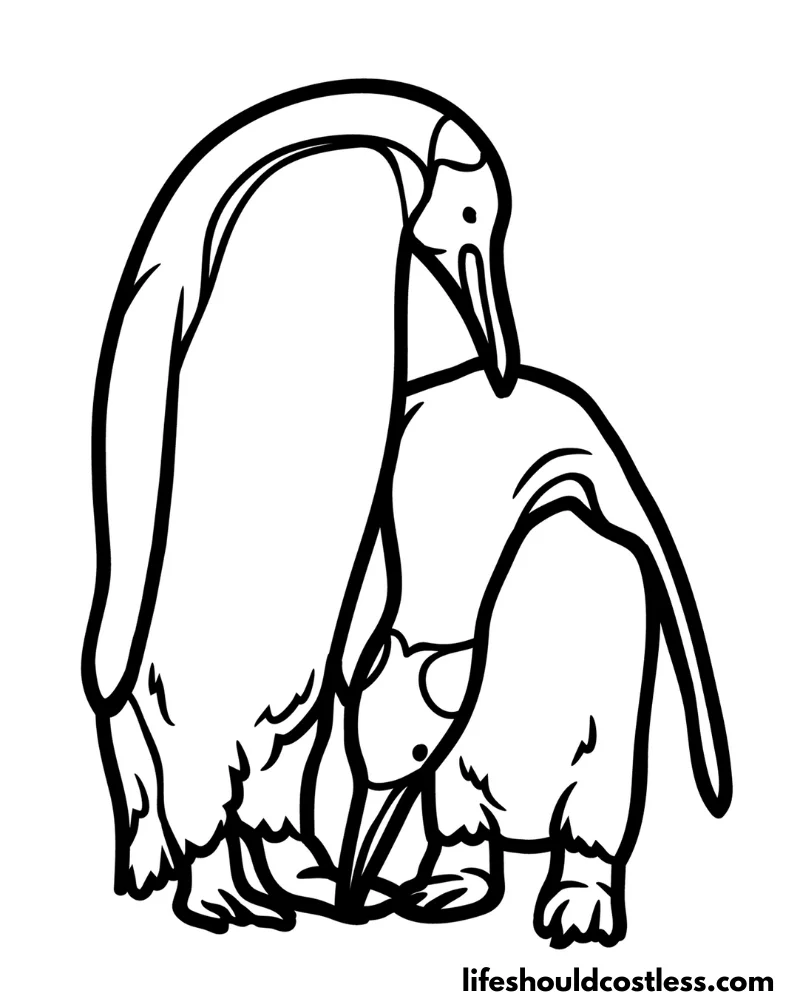
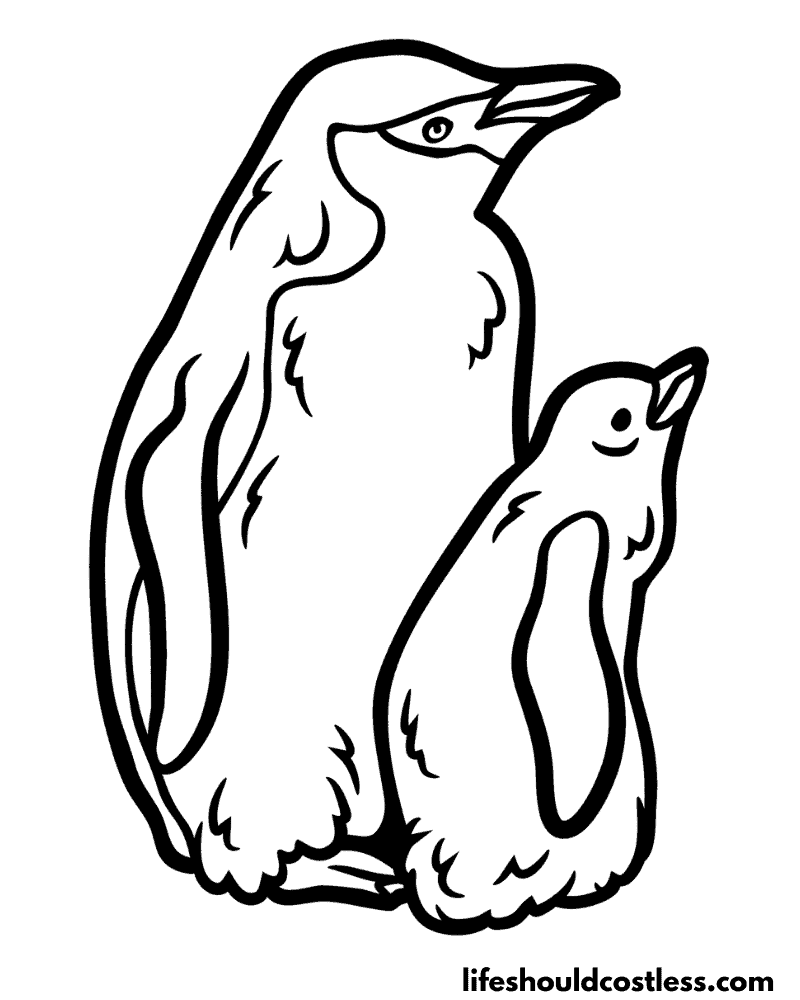
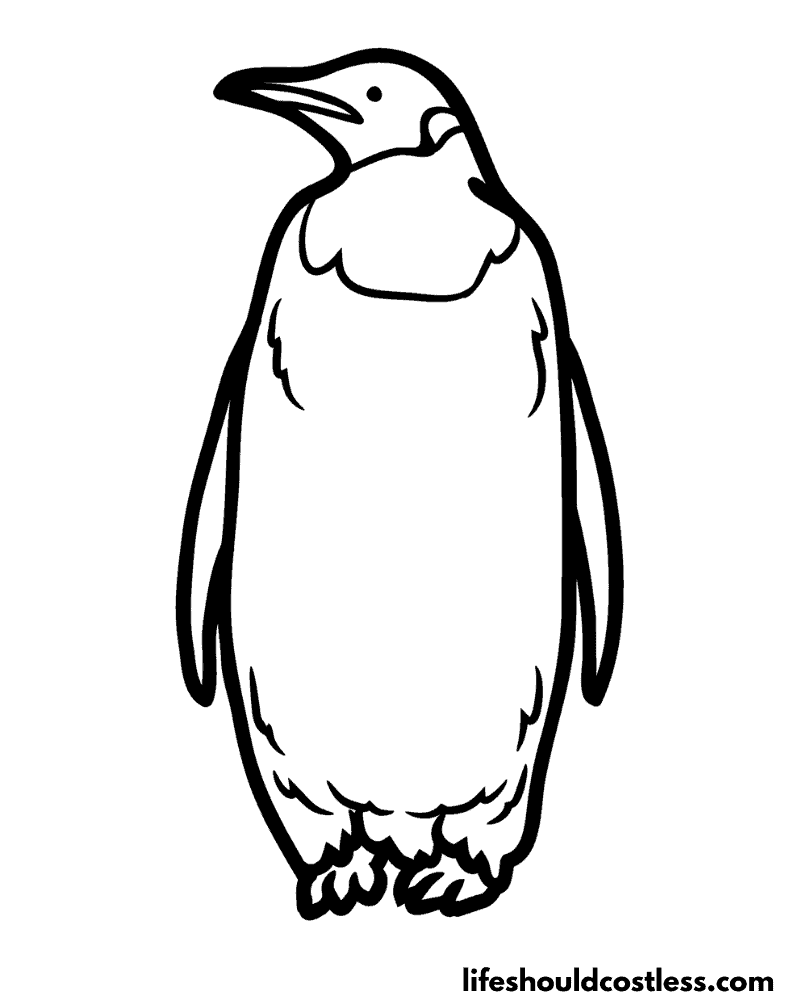

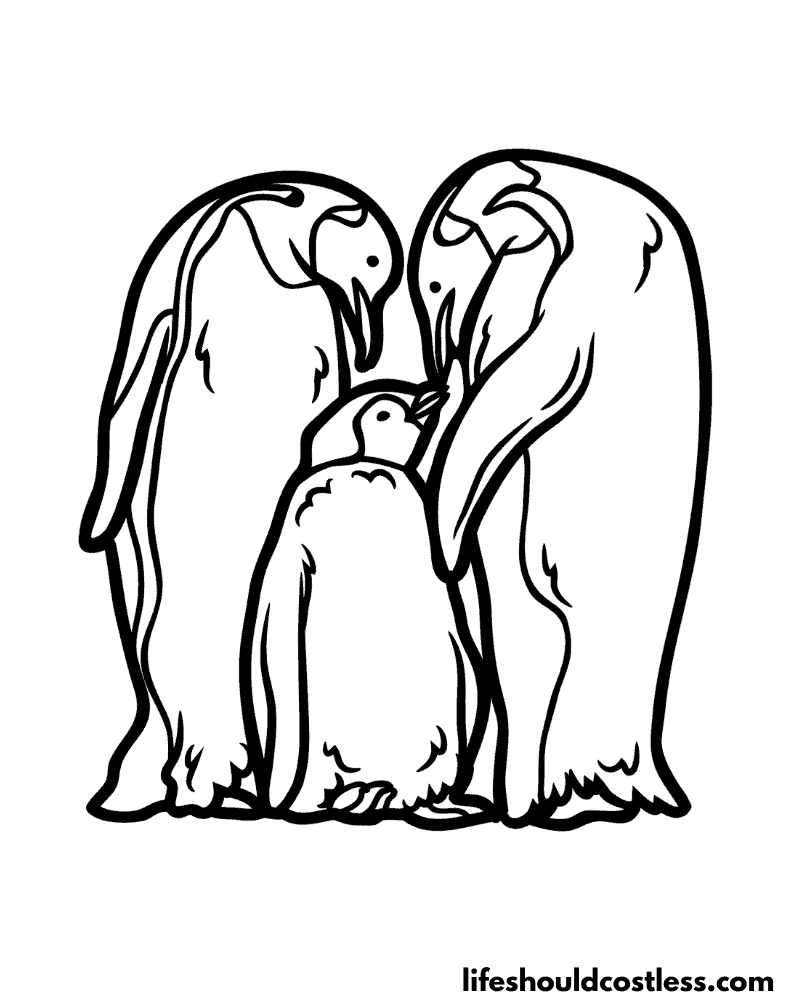
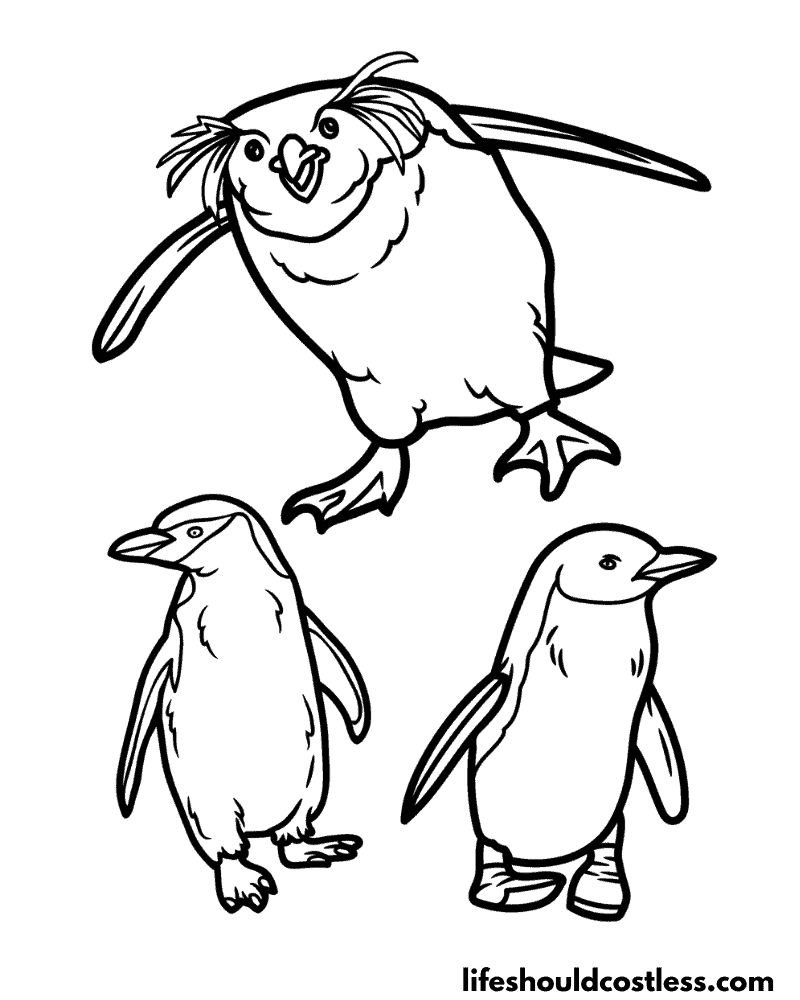
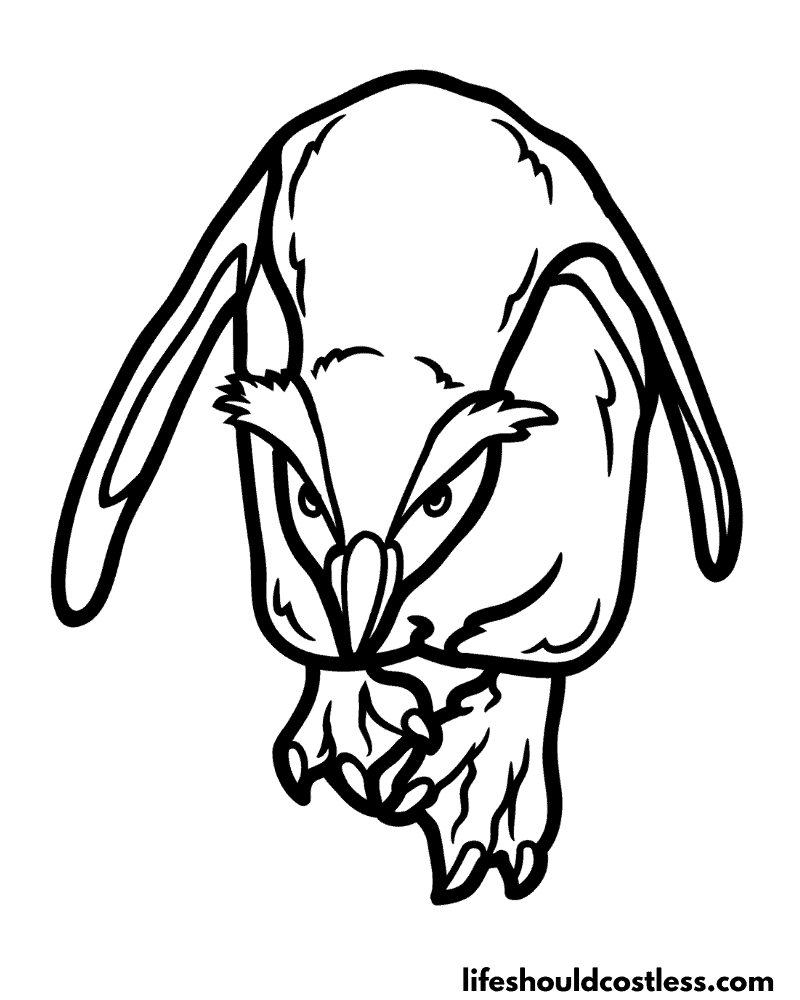
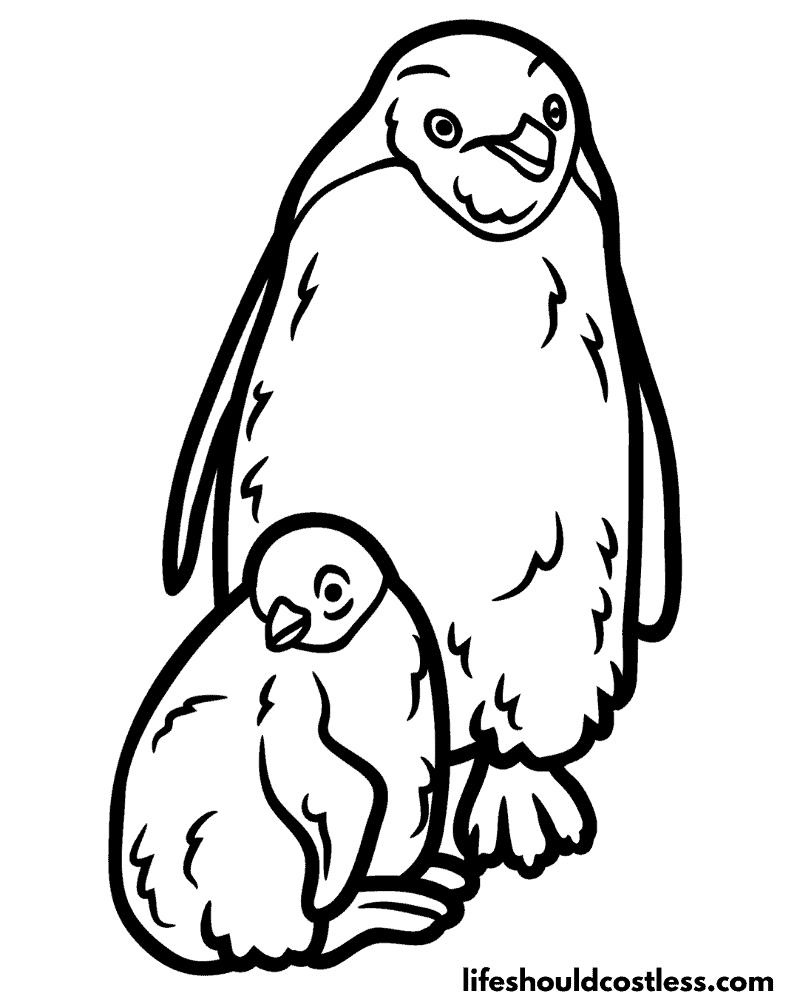
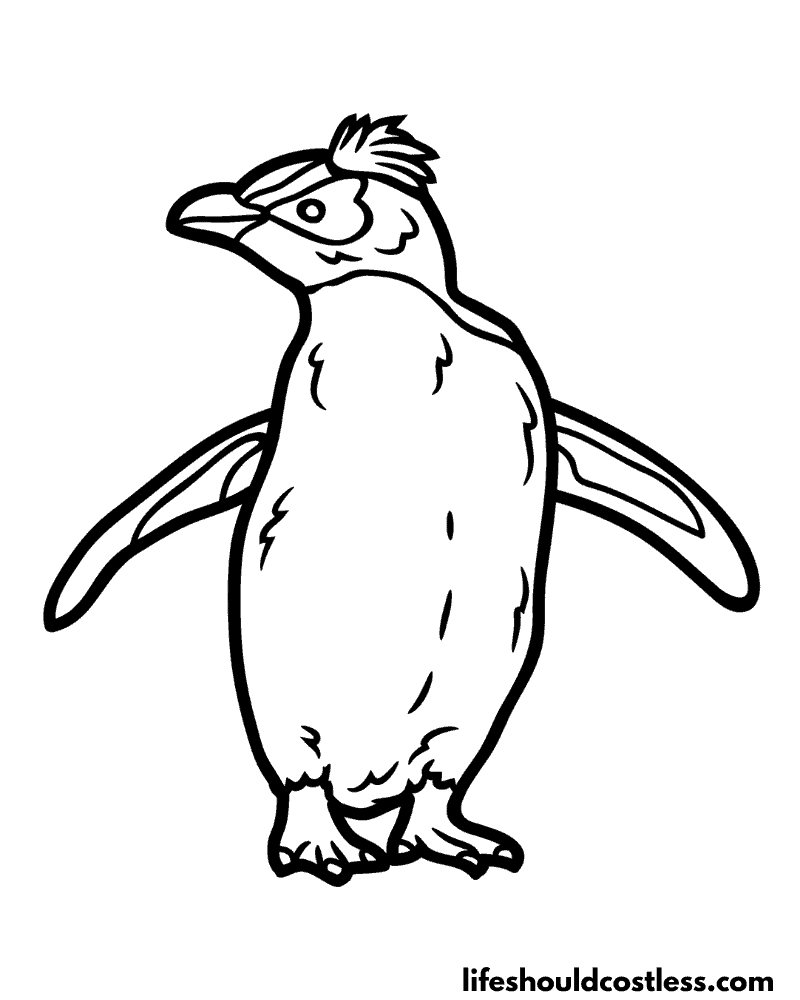
FAQ’s
The color of a penguin varies depending on the species. The most well-known penguin species, like the Emperor penguin and the Adélie penguin, are primarily black and white.
However, there are some penguin species with variations in color.
For example, the Little Blue penguin (also known as the Fairy penguin) has a bluish-gray plumage.
The Galápagos penguin, which lives near the equator, has a darker coloration to help it cope with the sun’s intense heat.
So, in general, penguins are primarily black and white, but there are exceptions among the different penguin species.
Penguin skin is mostly pink or grayish in color. The color of a penguin’s skin is more apparent in areas where there is less feather coverage, such as around their eyes, beak, feet, and flippers.
The skin on their face and around their eyes can range from pink to reddish, and their feet and flippers tend to be pink or grayish.
The pink or gray coloration is due to the presence of blood vessels close to the skin’s surface, which helps regulate the penguin’s body temperature by facilitating heat exchange.
The exposed skin areas play a crucial role in thermoregulation, allowing penguins to cool down or warm up as needed in their often extreme and varying environments.
*I will add more penguin colour / color questions and answers as the questions get sent to me.
Conclusion
In conclusion, our penguin coloring pages offer much more than just a creative pastime; they provide a captivating window into the world of these remarkable birds.
Through the strokes of your colors, you can bring to life the resilience of penguins in their harsh habitats, the intricacies of their social structures, and the unique beauty of their plumage.
Coloring these endearing creatures not only allows you to express your artistic talents but also offers an educational opportunity to learn about their natural history and conservation needs.
So, whether you’re an aspiring artist, a penguin enthusiast, or someone simply looking for a relaxing and educational activity, dive into the world of coloring penguins.
As you fill each page with vibrant hues, you’ll not only brighten the image but also gain a deeper appreciation for these incredible creatures and the importance of preserving their fragile habitats.
Thanks so much for stopping by my blog and supporting my endeavors to make people’s lives a little easier/better/more affordable.
If you liked this post, or found it helpful in any way, please make sure to share it with your family, friends, and co-workers via social media.
Or you could even send them the direct link via email. Whichever way you choose to spread the love, I super appreciate it! ~Sarah
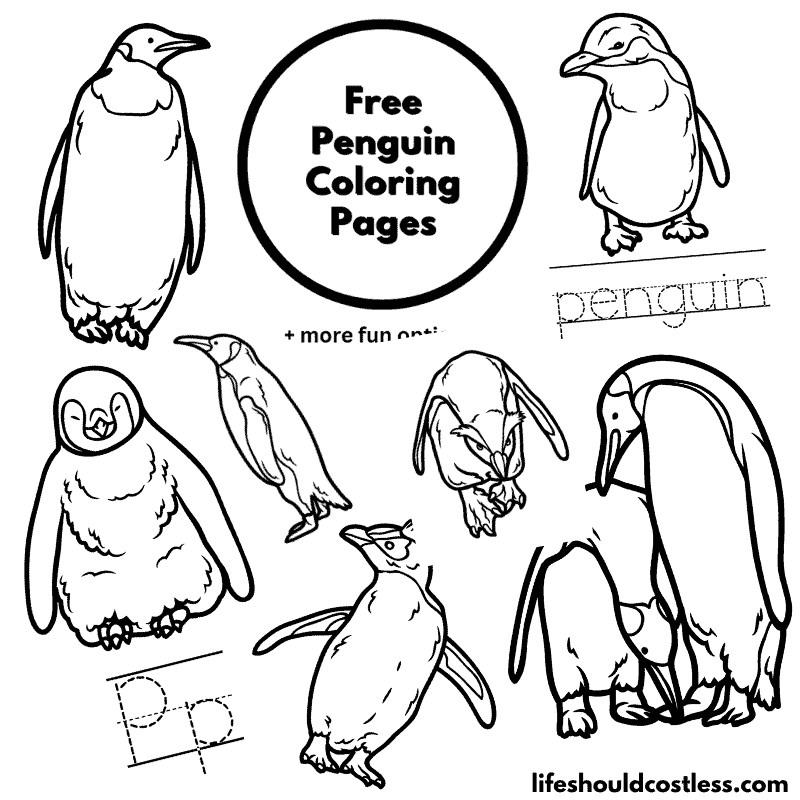
How To Follow & Support This Site
- If you would like to subscribe to my email list, go here.
- Make sure to follow along via social media, by going here.
- If you would like to learn how to really show your support to this site (at no cost to you), go here.
- If you would like to make a direct donation to the site, go here.
Check out my other free printables
- To see all of my free printables, go here.
- To see an alphabetized index of all of my coloring pages, go here.
- To see all of my Animals coloring pages, go here.
- To see all of my Birds coloring pages, go here.
Otherwise, here are direct links to several of my other related articles that you’re also going to love:
Animals / Birds
Animals / Mammals
Animals / Insects
Other good resources for a printable penguin
- https://clipart-library.com/cute-penguin-coloring-pages-printable.html
- https://www.coloringbuddy.com/penguin-coloring-pages.html
- https://www.easy-crafts-for-kids.com/cute-penguin-coloring-pages.html
*This post was originally shared to this blog on 10/10/2023, & has since been updated to improve user experience, add video instruction, as well as to make it as shareable as possible across the social medias.
**Please note that I do try my hardest to provide factual, but easy to understand, information about each topic. If you notice a discrepancy in my coloring pages, facts, or see something that you deem “misinformation/incorrect” please make sure to notify me about it. I would prefer that you send me an email with a link to a more reputable resource on that subject, so that I can correct it as soon as possible. Thanks so much for helping this site become the best that it can be!
***Resources from djinkers were used in the production of this article.
